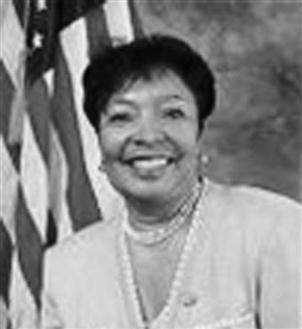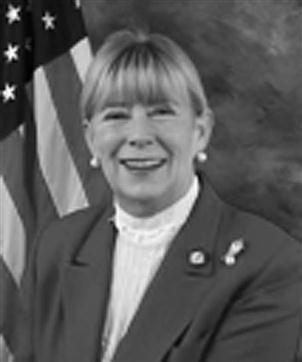Is There a Nurse in the House? The Nurses in the United States Congress
Mary W. Chaffee
“I have seen in the Halls of Congress more idealism, more humanness, more compassion, more profiles of courage than in any other institution that I have ever known.”
—Hubert H. Humphrey
The U.S. Congress is a democratically-chosen body elected at regular intervals to represent the interest of each state’s citizens. The Congress consists of 535 members—435 in the House of Representatives and 100 in the Senate. The 111th Congress of the United States, elected in November 2008, included 2 state troopers, a retired U.S. Navy vice admiral, 4 ministers, 3 organic farmers, an FBI agent, a television reporter, 16 physicians, an astronaut, 2 bank tellers, 38 mayors, a waitress, a meat cutter, a former first lady of the U.S. and 2 former state first ladies, a riverboat captain, a volunteer fireman, an auctioneer, an NFL football player, a mountain guide…and 3 nurses (Congressional Research Service, 2008). The first U.S. Congress met in 1789. In 1992, 203 years later, Eddie Bernice Johnson became the first nurse elected to serve in the U.S. Congress. Johnson (D-TX-30) has been joined by Lois Capps (D-CA-23) and Carolyn McCarthy (D-NY-4). Four more nurses were elected in the 2010 midterm election and will serve in the 112th Congress. The new nurse-members are Renee Ellmers (R-NC), a former critical care nurse; Diane Black (R-TN), a former emergency nurse; Ann Marie Buerkle (R-NY), a former school nurse; and Karen Bass (D-CA), a former nurse and physician assistant.
Though elected to represent their constituents, Congress as a whole does not always reflect the population characteristics of the nation (Heineman, Peterson, & Rasmussen, 1995). For example, 51% of the 2000 U.S. population was female (U.S. Census Bureau, 2005). However, only 17.7% of the 111th Congress was female (Congressional Research Service, 2008).
The Nurses in Congress
The three nurses who served in the 111th Congress arrived at their positions through extremely different paths. One replaced a spouse who died while serving in Congress, another ran for office after the incumbent refused to take a stand on gun control following an act of gun violence that killed her husband, and the third ran for Congress after serving in her statehouse. Though their backgrounds are different, their records demonstrate consistent commitment to improving health and social policy. All serve in the House of Representatives; no nurse has yet served in the Senate. Table 76-1 describes the three nurses who served in the 111th Congress.
TABLE 76-1
About the Nurses in the 111th U.S. Congress*

*Four more nurses were elected to serve in the 112th Congress.
The Honorable Eddie Bernice Johnson
Congresswoman Eddie Bernice Johnson’s political career began with the urging of friends after she had worked as a nurse for 15 years. She campaigned for, and won, a seat in the Texas House of Representatives. President Jimmy Carter appointed her to serve as the Department of Health, Education and Welfare Regional Director in 1977. Following elected service in the Texas State Senate, she was elected to the U.S. House of Representatives in 1992 (Johnson, 2007).
A lifetime member of the National Black Nurses Association, Johnson has been recognized by a number of organizations for her efforts in the areas of health care, science, and transportation (Figure 76-1). She serves now as a Senior Democratic Deputy Whip, Chair of the Texas Democratic Delegation, and Chair of the Congressional Black Caucus in the 107th Congress. Johnson has advocated for reauthorization of the Children’s Health Insurance Program and support for family members of patients with Alzheimer’s disease, and she introduced legislation that would help unemployed manufacturing workers be retrained for the health care workforce (About Eddie Bernice Johnson, 2009). Johnson has worked with The Century Council, a not-for-profit group funded by the distilling industry, to caution teens about the dangers of underage drinking, and driving while intoxicated (Harakal, 2009). In 2008, she was honored by the Society of Women Engineers with their first-ever President’s Award for her work in promoting diversity and inclusion as a legislator and as co-chair of the House Diversity and Innovation caucus (Society of Women Engineers, 2009).

The Honorable Carolyn Mccarthy
Carolyn McCarthy’s story demonstrates how life can turn on a dime. In 1996, she was a New York wife, mother, and nurse. Shortly after, her life story was made into a television movie, she appeared on Oprah, and she addressed the Democratic National Convention (McCarthy, 2007). McCarthy’s life changed course on December 7, 1996, when her husband Dennis and son Kevin were shot by a gunman aboard the Long Island Railroad. Her husband died, and her son faced a difficult recovery from his wounds. When shortly after the shootings her congressman, Representative Daniel Frisa, voted to repeal the assault weapons ban, her anger led to her run against him (McCarthy, 2007). The New York Times called her “The Long Island Everywoman, forced into the limelight by a flash of violence, who reluctantly capitalized on her own celebrity to take on and defeat one of the most daunting political machines in the nation” (Barry, 1996).
Though recognized for her legislative efforts focused on gun violence, Congresswoman McCarthy is not a one-trick pony (Figure 76-2). The New York Times endorsed her reelection in 2004 noting, “If Carolyn McCarthy were only a one-issue representative, it would still be difficult to discount the amazing influence she has had in her four terms in the fight for gun control. But Ms. McCarthy, who became a Democrat and won the congressional seat after her husband was killed and her son wounded by a gunman on a commuter train, has taken on much more. A novice when she first entered the world of politics, Ms. McCarthy has grown into a strong and forceful representative for the region and an important voice on issues like health care and education” (The New York Times, 2004).

Stay updated, free articles. Join our Telegram channel

Full access? Get Clinical Tree


